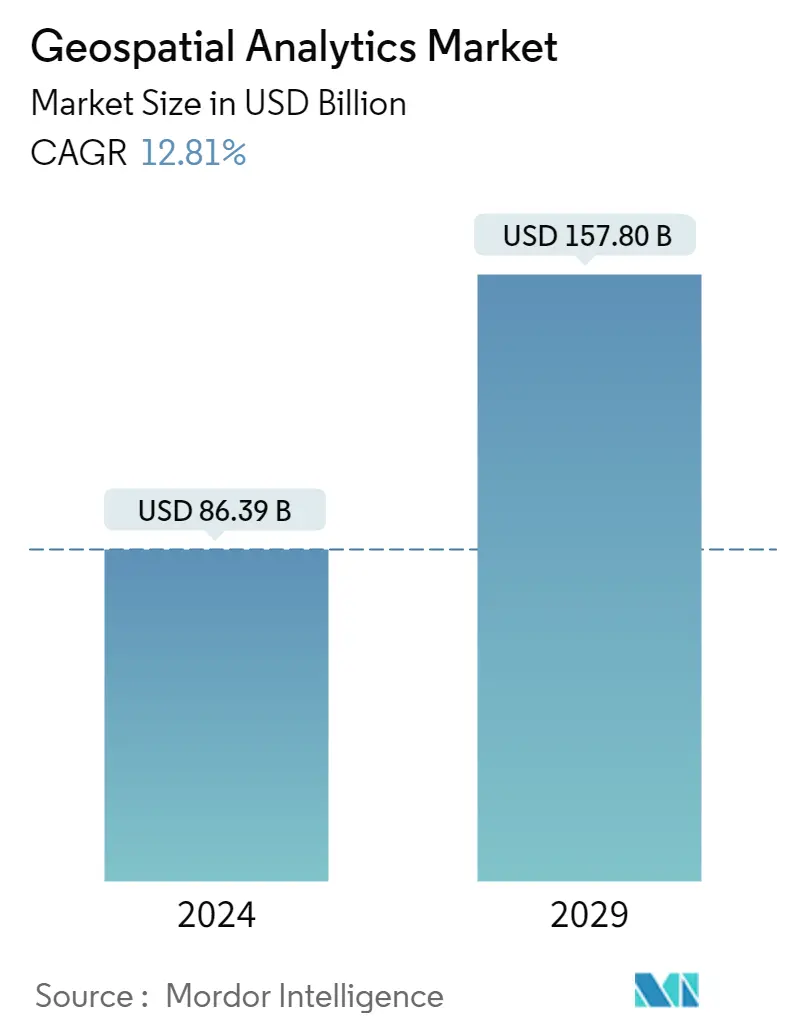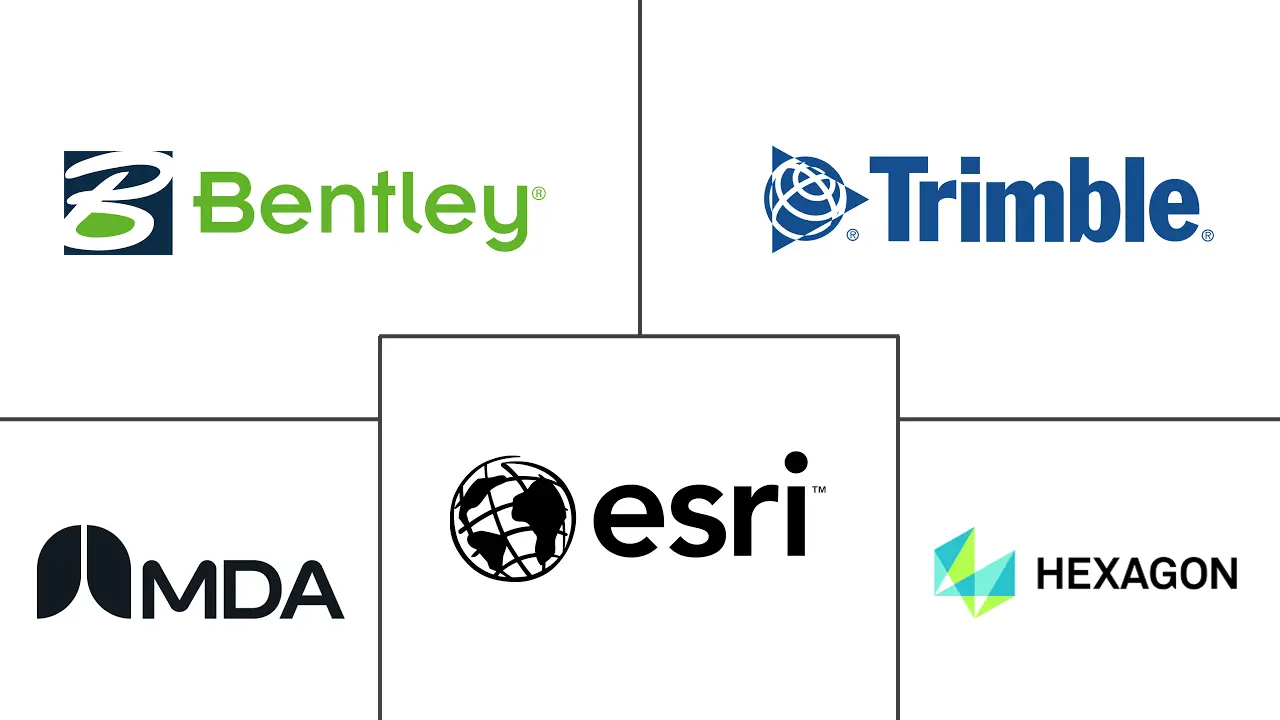Market Size of Geospatial Analytics Industry

| Study Period | 2019 - 2029 |
| Market Size (2024) | USD 86.39 Billion |
| Market Size (2029) | USD 157.80 Billion |
| CAGR (2024 - 2029) | 12.81 % |
| Fastest Growing Market | Asia Pacific |
| Largest Market | North America |
Major Players
*Disclaimer: Major Players sorted in no particular order |
Need a report that reflects how COVID-19 has impacted this market and its growth?
Geospatial Analytics Market Analysis
The Geospatial Analytics Market size is estimated at USD 86.39 billion in 2024, and is expected to reach USD 157.80 billion by 2029, growing at a CAGR of 12.81% during the forecast period (2024-2029).
- Geospatial analysis manipulates, collects, and displays geographic information system (GIS) data and imagery, such as satellite and GPS imagery. Geospatial analysis is based on geographic coordinates and specific identifiers, including street or postal codes.
- In this data-driven industrial age, location information and spatial data using interconnected technologies (augmented reality, big data, artificial intelligence, machine learning, IoT, and 3D technology) are transforming the core of traditional business practices, driving the competitive advantage through data visualization. The need for geospatial content, real-time data, and services at the consumer application and enterprise level is constantly increasing.
- 5G is also expected to aid in addressing environmental challenges such as disaster management and climate change through digital mapping and location intelligence technologies. The connectivity, speed, and capacity of 5G and IoT are expected to reduce greenhouse gas emissions, improve energy efficiency, and enable better renewable resource use. 5G is also anticipated to help improve decision-making about weather, vegetation, and waste management, increasing the requirement for geospatial analytics.
- The driving factor is the increasing acceptance of smart city development. Geospatial analytics solutions have become the platform for smart city growth. Geographic information system (GIS) has become an integral part of everyday life in smart cities. GIS provides an IT infrastructure that integrates all stakeholders and all smart city processes, from planning and design to development and maintenance.
- Geospatial data creation and analysis are extensively utilized in governments, corporations, and scientific fields. Still, the inherent confidentiality features of location data create obstacles for geospatial research and its societal applications. The public concern over privacy was raised with the increasing usage of GIS and related geospatial technologies, and government rules and regulations restrict data gathering, location sharing, usage of location-based information, and data storage. This is expected to hinder the market's growth.
- The impact of the COVID-19 pandemic on the geospatial analytics market was negligible, with many companies, such as healthcare institutions and governments, adopting geospatial technologies for medicines and drug delivery during the pandemic. Influencing response efforts are categorized using geospatial analysis.
- However, many companies are updating their solutions to automate ML and AI technologies to offer accurate insights. With the advent of 5G technology, this trend will continue to increase during the forecast period. New start-ups are expected to boost the demand for the geospatial analytics market in the near future.

